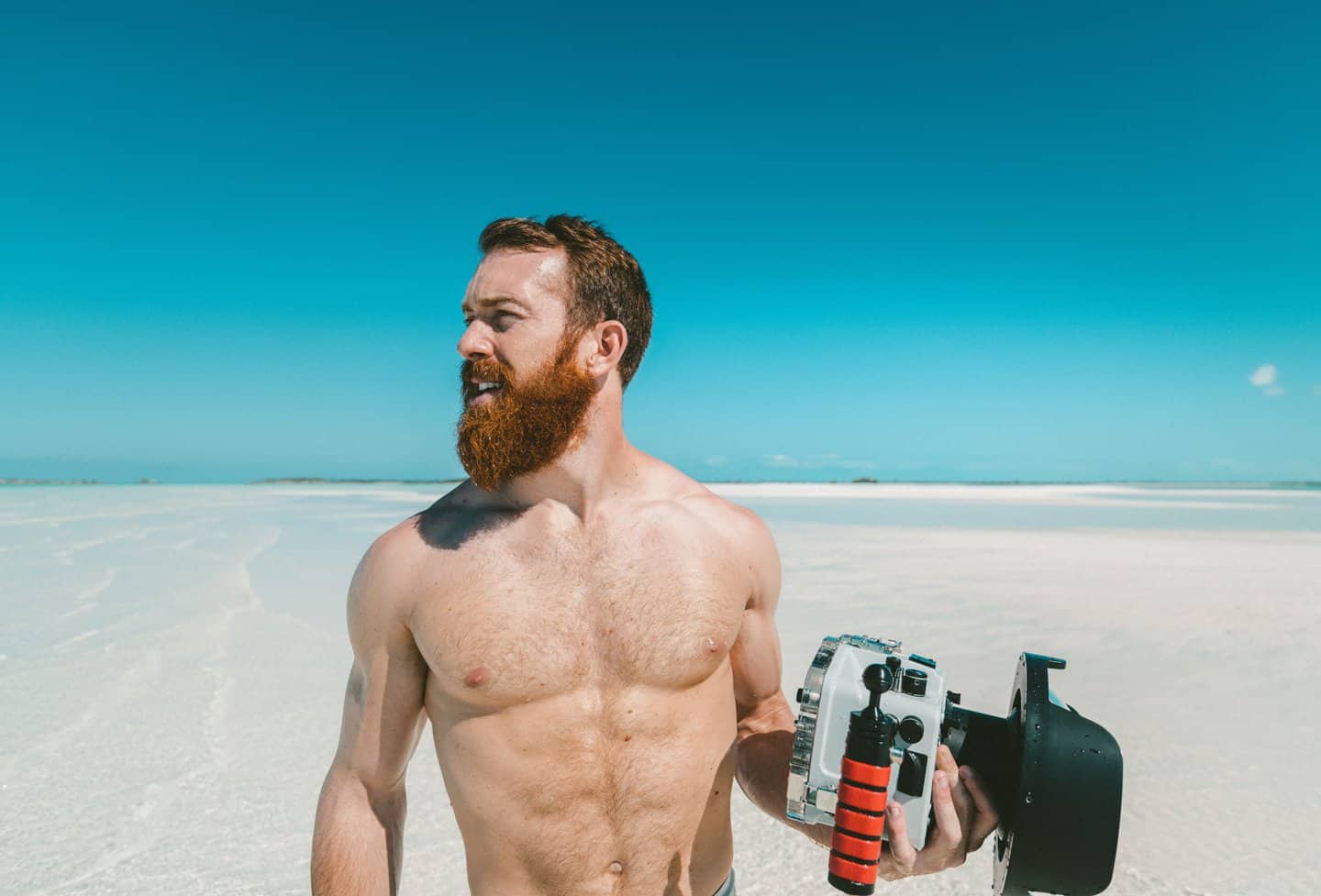Geschatte leestijd: 3 minutenWhether you’re running, playing a game of baseball, or going for a power walk, pay attention when the temperature rises. Use the following – actually very logical – precautions to avoid being overcome by the heat when exercising outdoors in warm weather, and of course also when training in the gym during nice weather.

How Heat Affects Your Body
Exercising in warm weather puts extra strain on your body. If you don’t take precautions when training in the heat, you risk your body becoming seriously ill. The workout itself and the air temperature together cause your body temperature to rise.
To cool down, your body sends extra blood to your skin. This reduces the amount of blood available to your muscles, causing your heart rate to increase.
If humidity is high, your body has an additional challenge because sweat doesn’t evaporate quickly enough from your skin. This further raises your body temperature.
Heat-Related Illness
In normal conditions, your skin, blood vessels, and amount of sweat adapt to the heat. But these natural cooling systems get into trouble when you exercise in warm weather and are exposed to high humidity, sweat excessively, and don’t drink enough. This can result in a heat-related illness.
Heat-related illnesses come in various degrees, from fairly mild symptoms that worsen rapidly if left untreated.
Heat-related illnesses, or heat injuries, include:
Heat Cramps
Heat cramps are painful muscle contractions, mainly in the calves, quadriceps, and abdominal muscles. The affected muscles often feel tight. Your body temperature may be normal.
Heat Exhaustion
With heat exhaustion, your body temperature rises to as high as 40°C. You may experience nausea, vomiting, headache, fainting, weakness, and cold, clammy skin. If left untreated, heat exhaustion can lead to heatstroke or ‘sunstroke’.
Heatstroke (Sunstroke)
Heatstroke is a life-threatening condition that occurs when your body temperature rises above 40°C. Your skin may feel hot, but you may stop sweating to cool down. You may feel confused and disoriented.
Immediate medical intervention is required for heatstroke to prevent brain damage, organ failure, and even death.
Watch for Warning Signs
If you exercise in hot weather, watch for signs and symptoms of heat-related conditions. Ignoring these symptoms can quickly worsen, resulting in the need for immediate medical intervention.
Signs and symptoms include:
- Muscle cramps
- Nausea or vomiting
- Weakness
- Headache
- Dizziness
- Feeling light-headed
If you notice one or more of these symptoms, or if someone else around you exhibits these symptoms, you need to lower your body temperature and drink fluids quickly.
Stop all exercise immediately and get out of the heat. If possible, have someone stay with you to keep an eye on you.
Remove excess sports clothing or equipment where possible. Drink fluids – water or a sports drink.
If possible, further cool your body by fanning it with a leaf or fan, or wetting your body with cold water.
If you don’t feel better within 30 minutes, call your doctor. If you show signs of heatstroke, you need immediate medical help (doctor’s office, emergency room).
Once you’ve had heatstroke, you’re at greater risk of experiencing another heat-related illness. Make sure you have your doctor’s permission to resume exercising after a heatstroke.
How to Avoid Heat-Related Illness
If you’re exercising in warm weather, follow these guidelines:
Monitor the Temperature
Pay attention to the weather forecast and heat warnings. Know how hot it can get during your sports activities.
Acclimatize
If you’re used to indoor sports or cooler weather, take it easy when you start exercising in the heat. As your body adapts to the heat over a week or two, gradually increase the length and intensity of your workouts.
Know Your Fitness Level
If you’re unfit or have no conditioning, be extra cautious when training in the heat. Your body may not handle the heat as well. Train less intensely and take frequent short breaks.
Drink Plenty of Fluids
Dehydration is a major factor in heat-related illnesses. You can help your body sweat and cool down by drinking plenty of water. Don’t wait until you’re thirsty.
If you plan to train hard or for more than an hour, drink a sports drink instead of water. Sports drinks replenish the salt, chloride, and potassium lost during sweating.
Avoid alcoholic beverages; these actually cause more fluid loss and can lead to dehydration.
Dress for the Temperature
Lightweight, loose clothing helps sweat evaporate and keeps you cooler. Avoid dark colors, as they absorb heat. If possible, wear a light-colored hat with a wide brim.
Avoid the Midday Sun
Exercise in the morning or evening, when it’s likely to be cooler outside. Try to exercise in the shade as much as possible, or do a workout in the pool.
Wear Sunscreen
Sunburned skin reduces your body’s ability to stay cool.
Have an Alternative Plan
If you’re concerned about the heat or humidity, stay indoors. Exercise in the gym, jog in a shopping mall, or climb stairs in a building with air conditioning.
Consider the Medical Risks
Some medical conditions or medications can increase the risk of a heat-related illness. If you still want to exercise in the heat, discuss with your doctor what you can do to prevent problems.
Heat-related illnesses can largely be prevented. By following some basic rules, you don’t have to stop exercising when the weather is hot.

